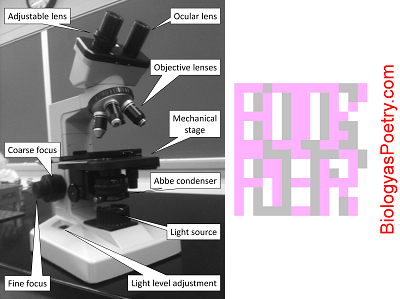∞ generated and posted on 2016.01.14 ∞
Platform upon which a slide rests while being viewed through a microscope.
The stage is a flat surface under which is found the condenser and above which is found the objective lens. Associated with the stage will be a clip that holds the microscope slide. See also mechanical stage.
The pathway of light through a compound microscope is: light source → condenser → iris diaphragm → stage → object/specimen → objective lens → ocular lens → eye or camera.

Figure legend: The stage here is labeled 'mechanical stage'. It is a platform upon which the slide sits. Immediately to the left of the label, 'Abbe condenser', on this microscope are two stacked dials that one uses to manipulate the position of the slide and therefore of the specimen with the field of view.
A common mistake made by those new to microscopy is improper use of the clip used to hold the slide upon the stage including failure to use the clip at all. Often this problem seems to occur because of unfamiliarity with different kinds of clips than those that are found on better, modern microscopes.
If a microscope has a mechanical stage and adjusting the stage fails to move the slide – where slide movement can be seen when looking at the stage directly, that is, rather than through the microscope's optics – then the problem might be that the slide is not properly secured in its clip. Alternatively, if movement fails to occur when looking through the microscope's optics then the problem might be that the microscope is focused in on something other than that slide.